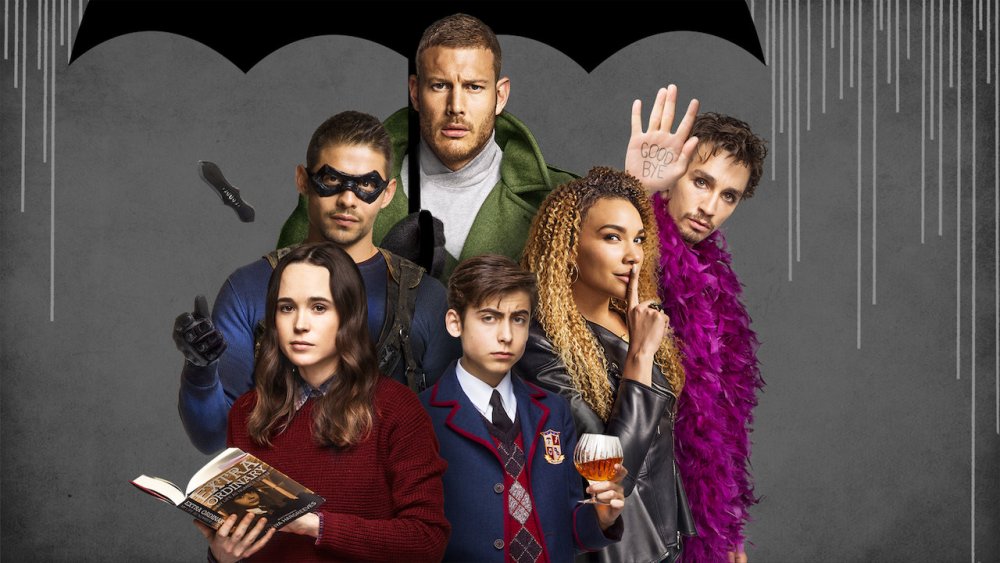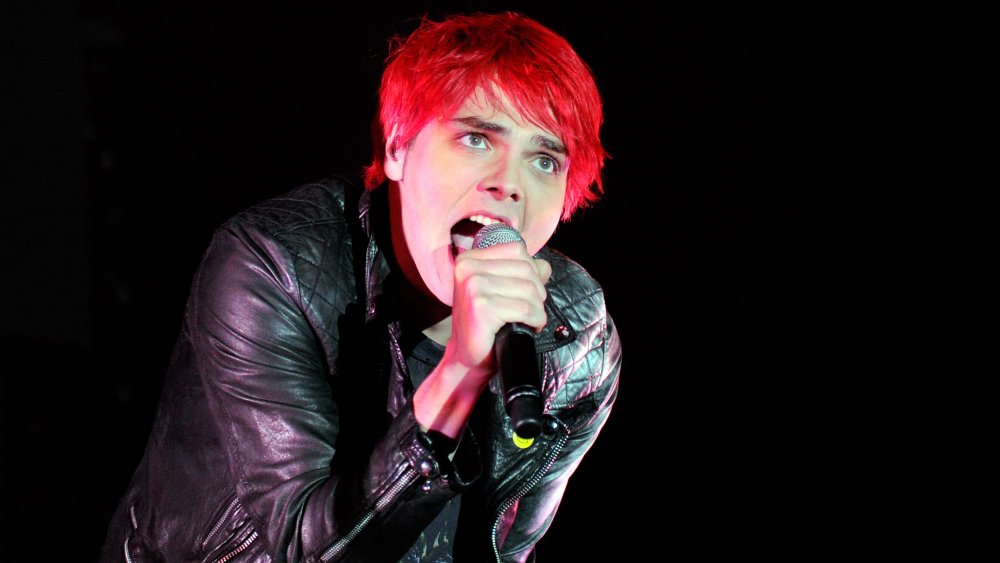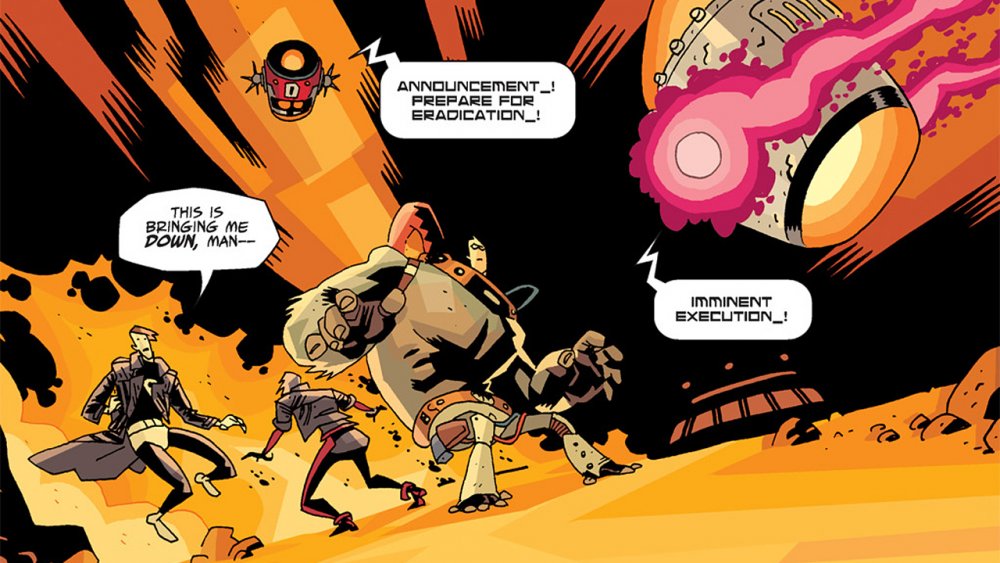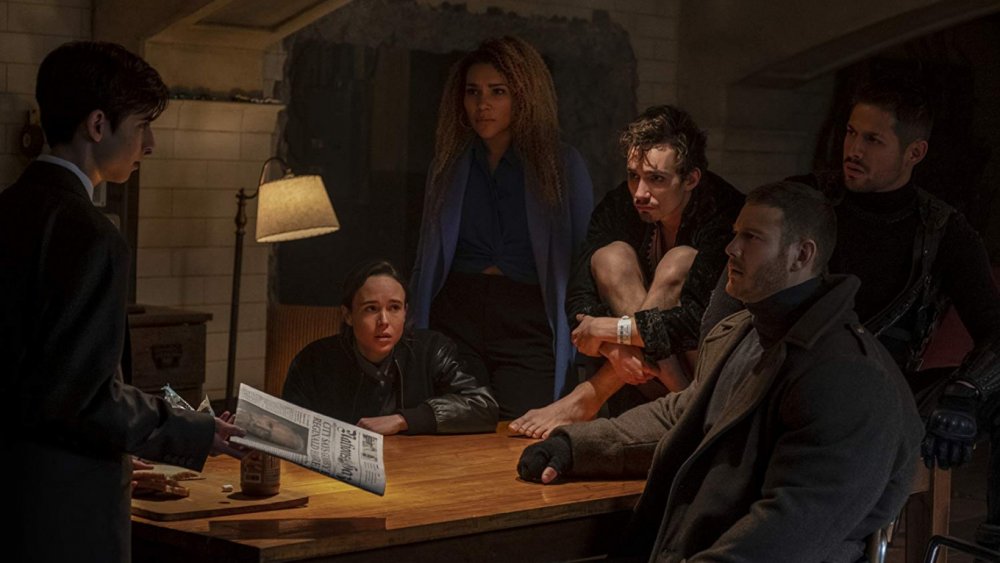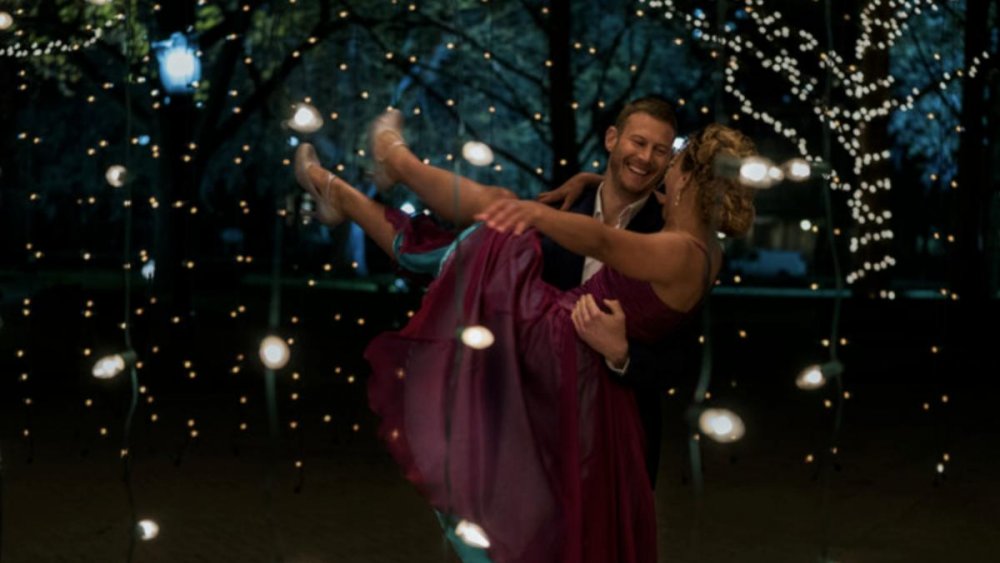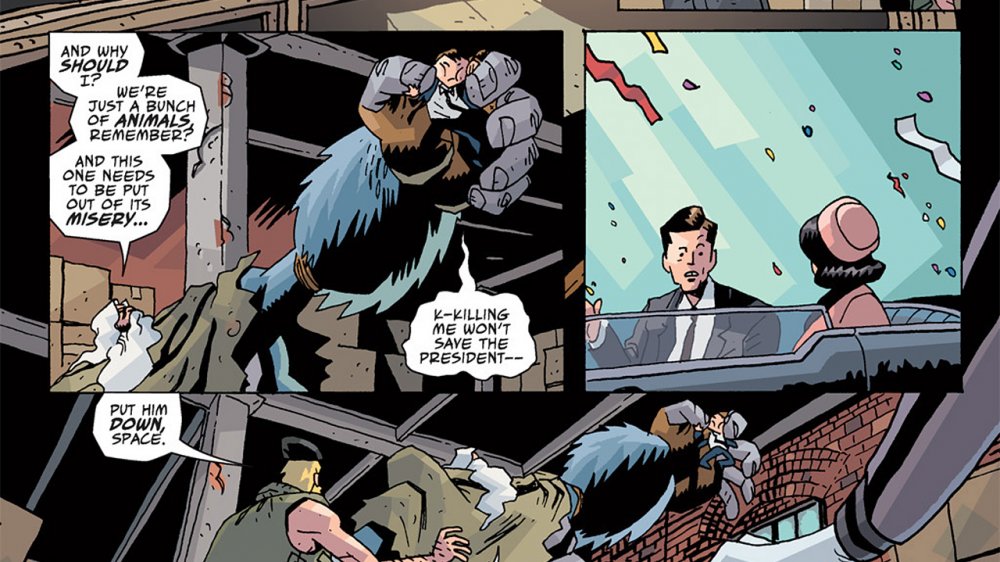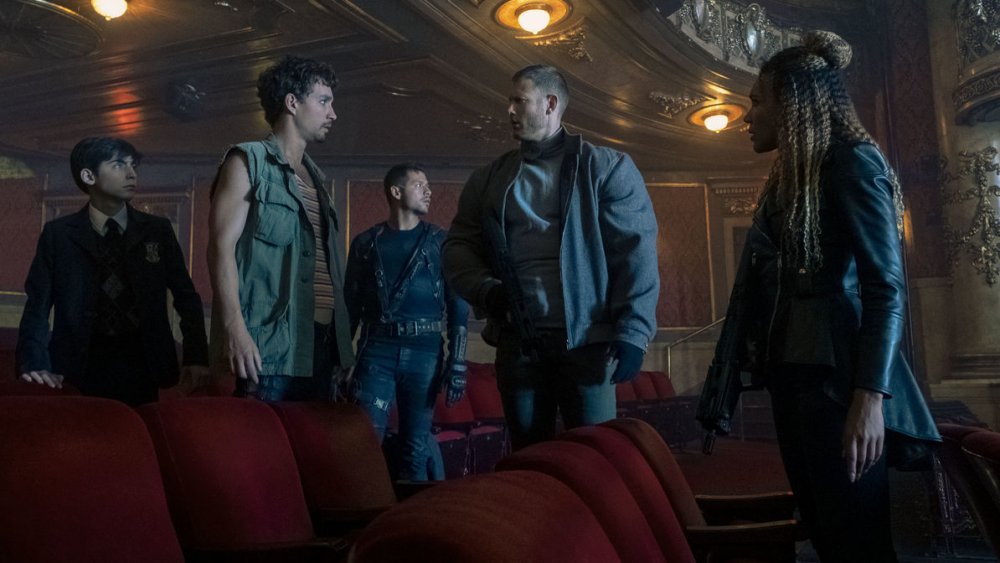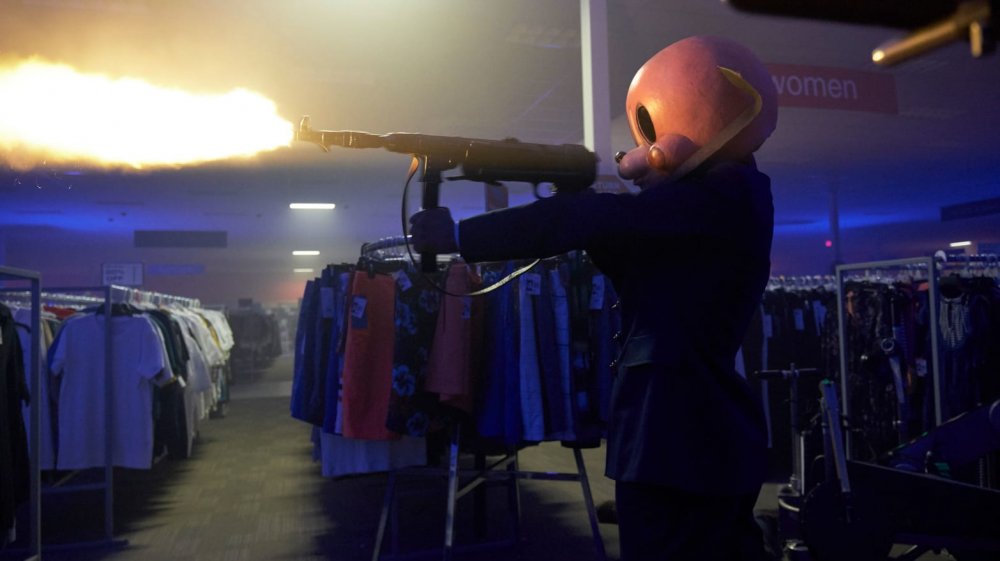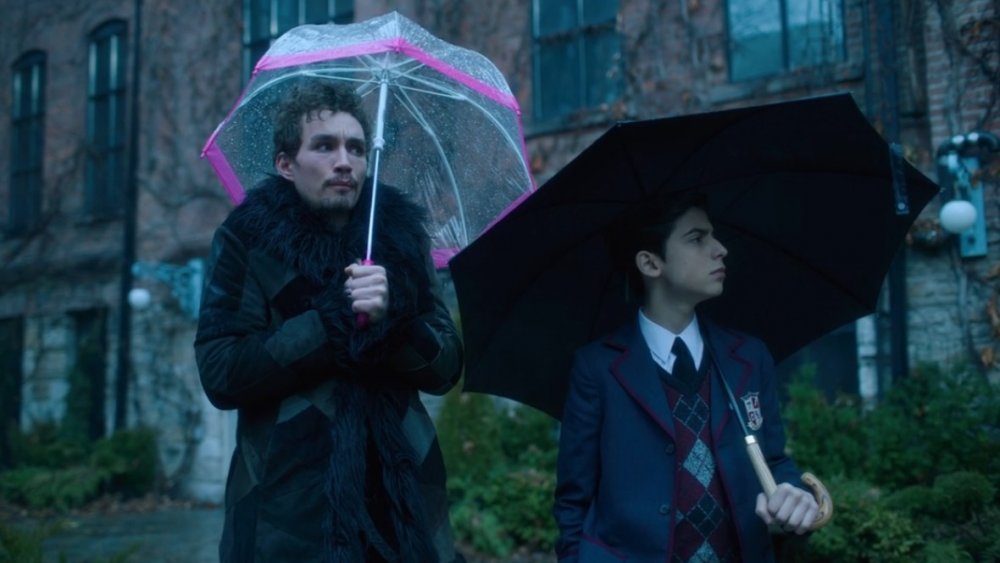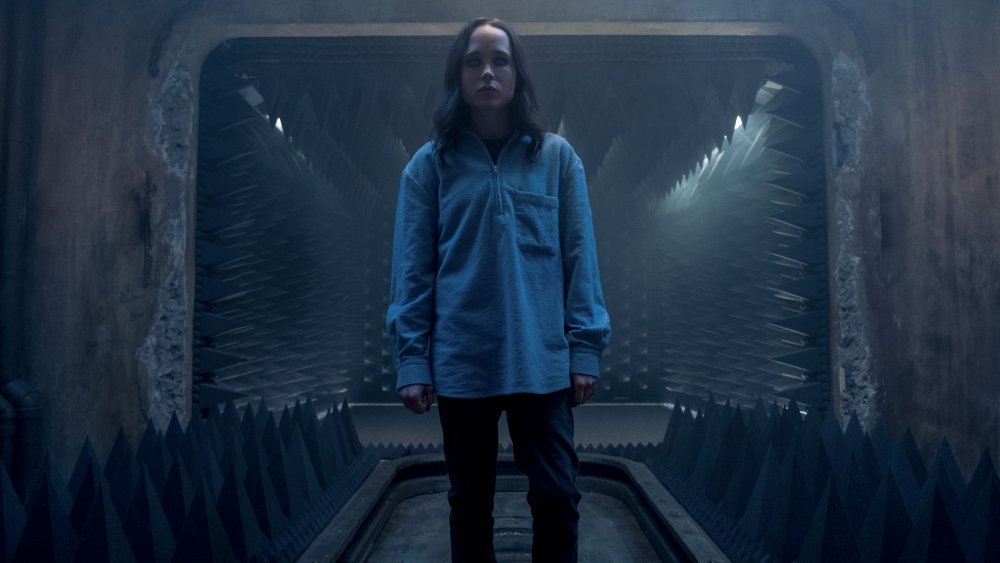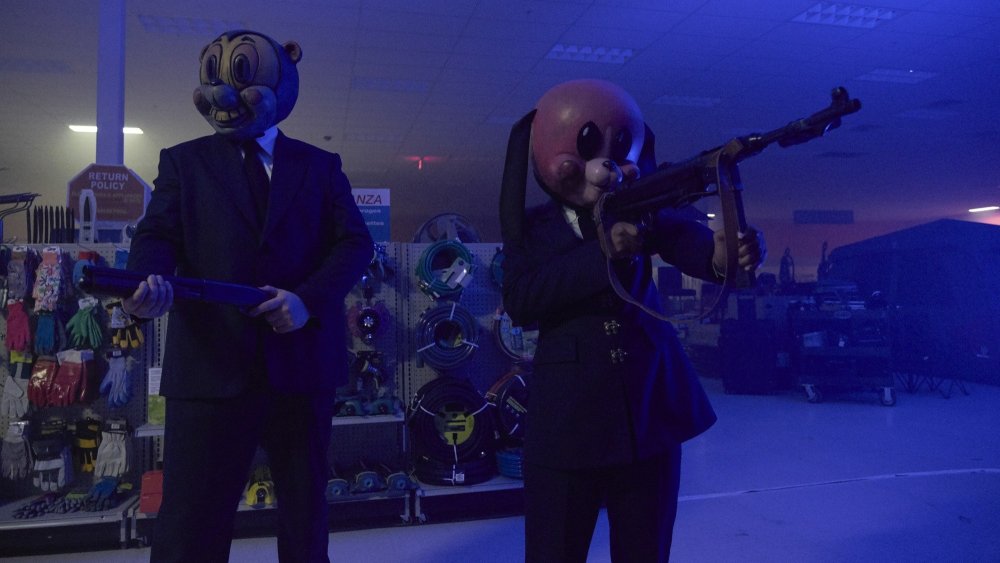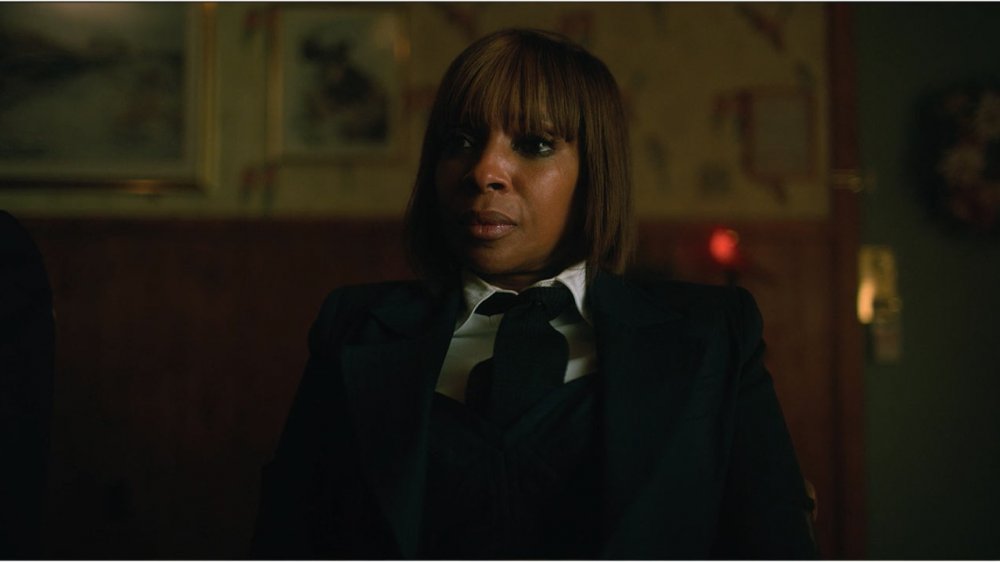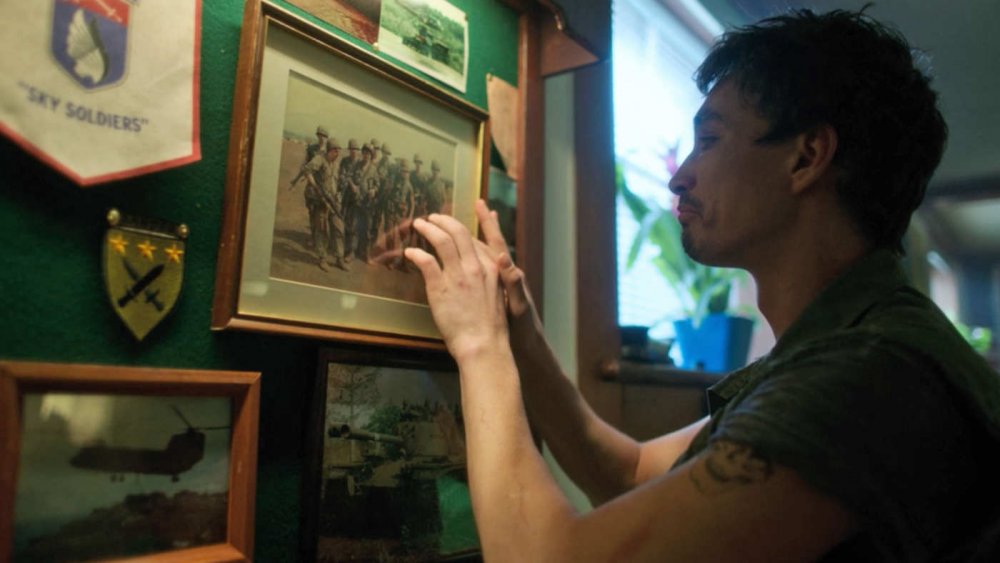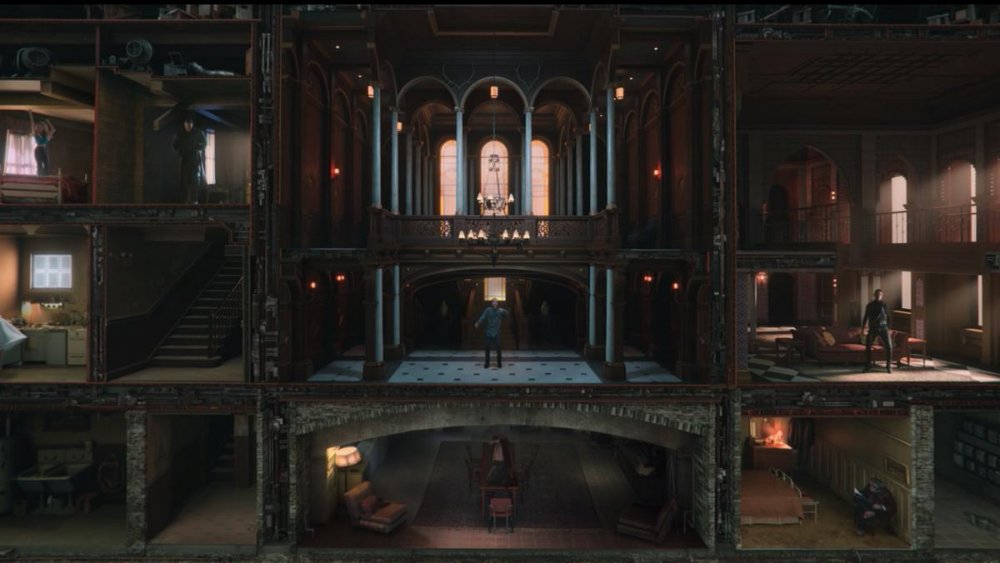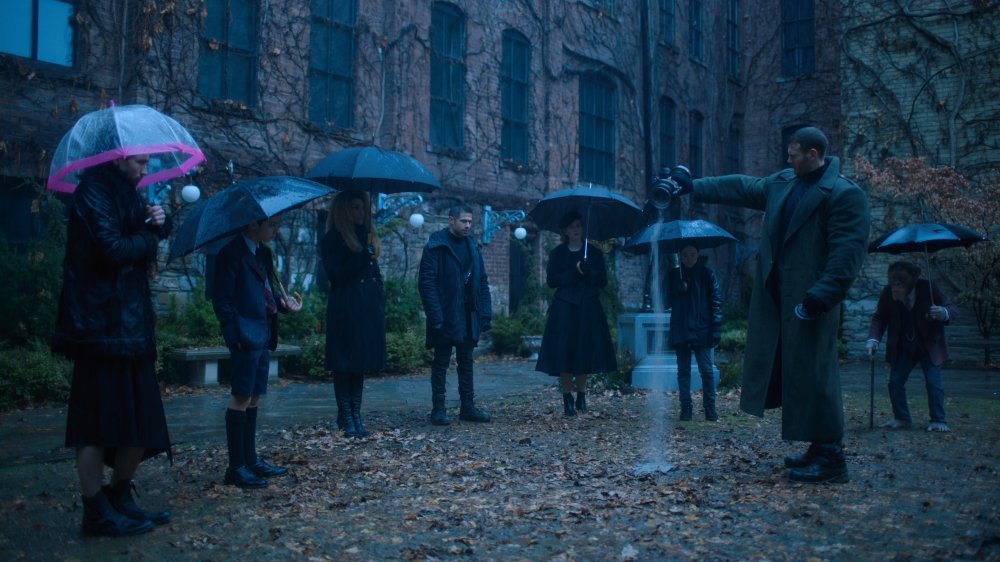The Untold Truth Of The Umbrella Academy
If you ask The Umbrella Academy creator Gerard Way what influenced him to write a comic about a dysfunctional family of adopted superheroes, he'll more than likely quote Marvel's X-Men or Hellboy as influences. In a lot of ways, that influence is clear — super-powered individuals forced to deal with the reality of day to day existence and rejection from those they love. On the surface, The Umbrella Academy sounds like it could fit into the pages of a Marvel comic, but Way's interpretation of childhood trauma goes deeper than masked vigilantes and villains looking to wreak havoc on the universe. Along with artist Gabriel Bà, Way put together something truly original, and in 2008, The Umbrella Academy won an Eisner award for best finite series.
In 2018, Netflix debuted its TV adaptation of the comic, and it's pretty safe to say the show's become a hit for the streaming giant. But while you might know quite a bit about the Hargreeves family and their past and future foes, there's still plenty left to uncover. From Way's creative process to some behind-the-scenes drama, here's the untold truth of The Umbrella Academy.
The Umbrella Academy comic helped Gerard Way process his time with My Chemical Romance
When Gerard Way first came up with the idea for The Umbrella Academy, his primary focus in life wasn't on writing a story about a dysfunctional family of superhero outcasts. Instead, he was deeply entrenched in his music career. In 2006, My Chemical Romance — the rock band that touched the lives of an entire generation of emo kids — had just released The Black Parade, the followup album to their 2004 hit Three Cheers for Sweet Revenge. Way spent a huge amount of his time in cramped touring quarters with his bandmates, who he told NME helped shape the personalities of the Hargreeves characters.
"Being in a band at really close quarters, as anyone whose had that experience will tell you, is like being in a dysfunctional family," he explained. " The chemistry of that is really interesting to me. I can see the guys from the band in each of the characters." More so, Way found himself using the comic as a means to sift through his entire experience with the band, from the people he came into contact with along the way to the fame itself. Like Way and his bandmates, the Hargreeves are a sort of self-formed family, and like the band, they struggle with their own family issues. "A lot of that was my way of processing the experience My Chemical Romance had if I'm being totally honest," he said.
Gerard Way wanted The Umbrella Academy to be a horror comic for superheroes
There are plenty of aspects of The Umbrella Academy that speak to the horror genre — the Séance (known on the Netflix series as Klaus) can communicate with the dead, the Horror (Ben) channels "eldritch creatures," otherworldly tentacled monsters, through an inter-dimensional portal under his skin, and the White Violin (Vanya) killed the family's beloved assistant, Pogo, and slit her sister's throat. In spite of all of these things, however, the comic doesn't always come across as a horror story. Instead, it finds its place snugly within the superhero genre, which is something that Gerard Way strove for in its creation.
In an interview with Vulture, Way explained how his initial inspiration for the comic came from something of an unexpected source. "I was reading Mike Mignola's Hellboy," he said. "I thought to myself, 'This is a horror comic, but it's not a horror comic at all.' And I thought there was nothing like that for superheroes." So he went about making his own version of a non-horror horror comic, set around a superhero family. For individual character inspiration, Way turned to his own interest in occult topics, and that's how things like seances and tarot cards made their way into the story.
The Hargreeves weren't always a family
Three comic volumes and a TV series into The Umbrella Academy, and it's difficult to imagine the Hargreeves siblings as anything other than adopted family members. Everything about them reads like a dysfunctional family, from their eagerness to please their father (for the most part) to their fierce sibling rivalry. But it wasn't until Gerard Way was well into writing that he decided to actually make them related in some form or fashion. He told Vulture that when he first created them, "They were just this collection of weirdos."
Had the Hargreeves only been a "collection of weirdos," the likelihood of the comic going on to be as successful as it's become is probably pretty remote. One of the greatest aspects of The Umbrella Academy is that it feels much more like a family drama set in a superhero setting than it does a superhero story with a family drama side plot. Readers, and now viewers, are tuning in to see what the Hargreeves will do to and for each other. Taking down a giant killer spaceship in the guise of the Eiffel Tower is just an added bonus.
Gerard Way also has questions about Luther and Allison
One of the larger story elements of Netflix's The Umbrella Academy is the will-they-won't-they back and forth between two of the Hargreeves adoptive siblings, Luther (Tom Hopper) and Allison (Emmy Raver-Lampman). Throughout the first season of the series, it's made clear the pair have feelings for each other that stem beyond the familial, and by season one's sixth episode, "The Day That Wasn't," they're finally able to share their first on-screen kiss. For some, the relationship feels, in a word, icky. And Gerard Way gets that.
Way told The Hollywood Reporter that when he first wrote the comic (in his 20s), he didn't see much of a problem with it. "But now that I'm 40, I'm like, 'Yeah, but they still grew up together,'" he said. "That's kind of f—d up." As it happens, the romance between Spaceboy and the Rumor isn't the only one that toes the line of social acceptability. In The Umbrella Academy comic, Vanya and Diego share a certain something as well.
If JFK had lived ...
The world of The Umbrella Academy is a strange one, to say the least. A supervillain with a device that allows him to eat anything in order to stave off a would-be fatal disease, a prison hidden in a pocket dimension that houses the worst criminals in the world, a reality in which John F. Kennedy was never assassinated ... wait, what? Somehow, in a comic centered on a family with powers ranging from time travel to, you know, ending the world, it's JFK that winds up being the strangest thing. It's also something that non-comic fans wouldn't have realized influences the Netflix series as much as it does.
Showrunner Steve Blackman told /Film that while JFK's survival in the comic means the Hargreeves live in an alternate timeline, it's one storyline that they'll probably leave alone for Netflix. Although we've seen Number Five (the version played by Aidan Gallagher) time jump prior to the actual assassination in the season one episode aptly titled "Number Five," it seems as though the former president did, in fact, fall. But since a huge portion of the comic's second volume, Dallas, deals with the prevention/facilitation of JFK's assassination, there's no telling whether or not it'll be dealt with in at least some capacity during season two.
The show was originally supposed to be a movie
Not long after Dark Horse published the first volume of The Umbrella Academy in 2008, Universal Pictures picked up the rights to the project. At the time, the comic was only the second Dark Horse property to have been purchased by the studio (the first was R.I.P.D., which went over with audiences about as well as you'd expect a film about an undead cop and his cowboy partner who hunt monsters while disguised as a Chinese man and a Victoria's Secret model would). The Umbrella Academy movie sat in development limbo for a number of years, which included a writer change in 2011, before Universal finally decided to let its option expire.
Gerard Way explained to NME that once the movie was out, he teamed up with Jeremy Slater, who wrote the pilot for The Umbrella Academy TV series and helped shop it to several networks. In 2017, Netflix picked up the rights, and a year later, we got the small screen version of the Hargreeves family. According to Way, the series wound up being a better option for the material anyway. Had Universal gone ahead with the film, it would've been the "first post-modern superhero movie," which he didn't think audiences were quite ready for at the time.
The series is shot like a feature
If The Umbrella Academy feels more like an extended film than a TV series, there's a reason, and it has nothing to do with the fact that the project spent so much time in development as a feature at Universal and everything to do with Steve Blackman's background. Prior to being named showrunner for the Netflix series, Blackman worked on Altered Carbon, a huge sci-fi original on the platform. Like Altered Carbon, The Umbrella Academy borrows much of its visual style from film, and they're the only two TV series that are shot on the Alexa 65, a large format digital camera.
Blackman told the Los Angeles Times that the show's visual aesthetic is in large part due to the camera itself. "It's a film camera, but it's beautiful and cinematic, so it really gives you sort of the almost anamorphic look," he explained. "We're not quite letterbox, but we have that style."
The Umbrella Academy's visual style has unexpected influences
Stylistically speaking, The Umbrella Academy may immediately elicit comparisons to the X-Men films, Kick-Ass, or even The Hitchhiker's Guide to the Galaxy. With a group of misfit superheroes at its core, it would be easy to lump it in with any number of comic-based action pieces, which could perhaps be traced back Steve Blackman's prior work on Legion. The Umbrella Academy walks a strange line between stylized science fiction, hyper-violence, and overall ridiculousness (see: alien father, robot mother, and chimpanzee butler), but it works.
According to Elliot Page, however, the show's visual style was actually influenced more by a few directors who've had zero experience in the superhero realm. In an interview with Vanity Fair, Page explained that The Umbrella Academy took many of its cues from Harold and Maude director Hal Ashby, as well as Wes Anderson. Their influence is clear, particularly in terms of the relationships between the Hargreeves siblings. While clearly dysfunctional, there's an obvious affection among them, however dry that affection may sometimes come across.
Vanya's TV arc is psychologically rooted
Although the trauma of being raised by an unloving adoptive father whose only interest ever seemed to be in exploiting his children's super powers takes its toll on every one of the Hargreeves children, it's especially damaging to Vanya (Elliot Page on the show). It's because of her strained relationship with both her father and her siblings that she eventually heads down the path toward super villainy, culminating in her becoming the White Violin and setting the apocalypse into motion.
While the character's arc in the comic is a little more straightforward, on the show, Vanya's slow descent into eventual madness is laid out meticulously. Steve Blackman told The Hollywood Reporter that a big part of the series for him was focusing on the psychological effects of childhood trauma. Vanya's particular arc came about on account of Page's desire to give her a "grounded transformation." It also serves as an explanation for her on-screen relationship with Leonard (John Magaro), who's kind of the textbook definition of an emotional abuser. While Blackman admits that, given more time, Vanya probably would've seen the relationship red flags, she was already so damaged that Leonard is able to manipulate her more easily.
Believe it or not, the TV characters are toned down from the comic
Netflix's on-screen adaptation of The Umbrella Academy has, for the most part, kept the comic's characters intact, but that doesn't mean those characters have made the jump from page to screen exactly as they were created. While things like the Commission, Number Five's former employer and the main antagonist of the series' first season, do exist in Gerard Way and Gabriel Bá's comic (albeit under the monicker "Temps Aeternalis"), the head of the organization on the show is the Handler, a very human-looking woman played by Kate Walsh. In the comic, it's run by a fish in a robot body named Carmichael, which is surprisingly not the most ridiculous thing from the source material.
Plenty of other instances like this exist between the two properties, and while certain details may work for comic fans, having characters that are so far removed from reality probably isn't the best course of action when you're trying to get mainstream TV audiences to invest themselves into a story that, at its core, is about a family dynamic. Cameron Britton, who plays animal mask-wearing Commission assassin Hazel, told Den of Geek that even his and Mary J. Blige's Cha-Cha were toned down for the show. "They're too wacky," he said. "They needed to be a little more grounded."
Mary J. Blige wanted to do her own stunts in The Umbrella Academy
As far as glaring differences go between The Umbrella Academy comic and The Umbrella Academy Netflix series, one of the most notable changes (as well as biggest improvements) is in terms of cast diversity. Representation was important to the series' crew, which Steve Blackman explained to The Hollywood Reporter. So when it came down to casting the show, they made some changes, and one of the biggest ones was with Cha-Cha, who got the gender swap treatment for the series and is played by Mary J. Blige.
But getting Blige wouldn't be easy ... or, at least, that's what Blackman assumed when her name was first dropped in a casting meeting. Turns out, all it really required was the promise of her own stunt work. "They go, 'Yeah, she wants to be an assassin,'" he told Vulture, recounting his conversation about Blige. "'She wants to throw punches and kick and shoot.' So I got on the phone with Mary, and she's like, 'If you let me punch and shoot and do my stunts, I'm in.'" For her part, Blige has been a big fan of playing an assassin. The musician/actress told the Los Angeles Times that she loves the stunts. "I always wanted to learn how to shoot a gun," she said. "I know how to shoot all types of guns now. And I know martial arts."
There's a reason you don't see any cell phones on the show
Regardless of whether or not Netflix's The Umbrella Academy will wind up existing in the same JFK timeline as its comic counterpart, there are certain things that point to the fact that it's at least set in a reality not quite our own. Steve Blackman told /Film that the show's lack of technology is one of those nods to the comic's JFK timeline origins, even if the show doesn't quite follow the same narrative. And while Allison's use of microfiche is a pretty cool Easter egg, there's one huge technological advancement completely missing from the series: cell phones.
In a cast interview with Screen Rant, both Elliot Page and Robert Sheehan, who plays Klaus, expressed their appreciation for The Umbrella Academy's lack of cellular technology. "[Y]ou know, you're offered a respite from a world where it's completely governed and obsessed by smart phones," Sheehan said. "It's a new way. Humans don't communicate the way they once did, anymore."
Gerard Way isn't totally into the TV show's music
The soundtrack for The Umbrella Academy may be just as eclectic as the series' characters themselves. From Tiffany's "I Think We're Alone Now" in episode one and Nina Simone's "Sinnerman" in episode three to Radiohead's "Exit Music (For a Film)" in episode seven, the show has no shortage of varied and interesting music. But, varied and interesting as it is, it's still a little too mainstream in the eyes of Gerard Way.
The comic creator told NME that although music played a huge role in how he approached the overall feel of the book (specifically Teenage Fanclub, the Pixies, and Smashing Pumpkins), when it came to the show, he didn't have much say over what went into the soundtrack. That was left to Steve Blackman, who Way says had "a pretty clear idea of the music he wanted to use." It's Way's hope, however, that they can use the success of the show in its second season to introduce audiences to music that he refers to as "more left-of-center stuff."
"I'd always pick a song by a band like Wire or Gang of Four over the sort of stuff Steve does," Way told the publication, "although I think he's incredible at using songs you've heard before in really interesting ways."
The series creators know how things will end ... eventually
The Umbrella Academy comic had been a work in progress for over a decade by the time Netflix aired its first season, but as of 2019, only its first three volumes have been released: Apocalypse Suite between 2007 and 2008, Dallas in 2008, and Hotel Oblivion between 2018 and 2019 (season one pulls from both Apocalypse Suite and Dallas). According to Gerard Way, he's planned for eight volumes total, which means that — hopefully — Netflix will follow suit with an eight-season run.
Way told The Hollywood Reporter, "Steven [Blackman] knows what happens in all of those eight volumes; I wrote up this document for him and the writers, which explains what will happen through all of the graphic novels." But though the story has been mapped out for the comic, you shouldn't expect to see everything translate exactly from the page onto the screen. According to Blackman, their goal with the show is to keep close to what's happening in the comic, but when it comes down to it, some things just aren't going to work on screen. Luckily, series creators are able to use Way's outline to plant future plot lines early on, so things will come together further into The Umbrella Academy's seasons.
